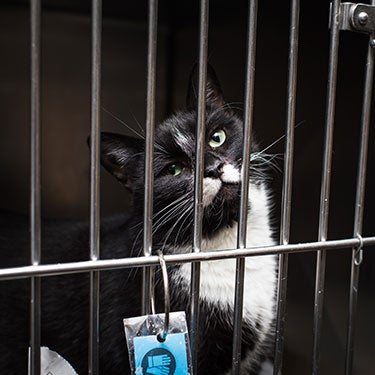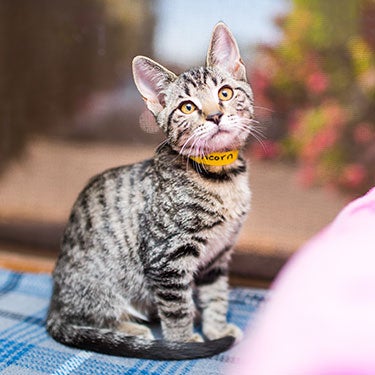Meow Meets: Introducing Cats to Cats
Introducing a New Cat to Your Feline Family Members.Say hello to your new furry friend.
Wouldn’t it be easy if you could bring home your new cat, introduce him or her to your other cat, have them shake paws, and then they’d all get along? Unfortunately, that’s not an entirely realistic scenario. Cats are extremely territorial creatures, no more so than with other cats. So, what’s the best way to introduce the new cat in town to their fuzzy roommates?
Help them find common ground.
Introducing your pets to each other gradually will minimize the risk of either animal becoming scared or even too aggressive. Your animals may do some initial sniffing or they may just stare at each other. It’s also possible they will simply growl or hiss at each other. Don’t worry — this is also normal. The introduction process can take anywhere from a few days to a few weeks. Cats can be territorial, and we’ll discuss what to do if there’s
1. A space of their own. Your new cat will likely need some time to adjust to you and their new living situation. To help him acclimate without overwhelming him, keep your new cat in a small room with his own litter box, food, water, scratching post, toy
2. Familiarize each other with their scents. Getting each cat acquainted with the other’s scent is a big part of getting them comfortable with each other. Now that you’ve begun the process of getting the animals used to each other’s smells, it’s time to kick that up a notch. Swap their blankets, beds or toys that the animals use. If there are more than two animals in the house, do the same for each animal. Once they all feel comfortable with this step, it’s time to open up the barrier door and let your new cat wander around the space while confining your usual pet(s) to the new cat’s room. You may want to pace the new cat and allow him into one or two new rooms at a time over a few days.
This is another opportunity for the animals to experience each others’ scents without meeting face-to-face quite yet, and it allows the new cat to get to know his new surroundings without the other pet(s) scaring him off or frightening him when he’s exploring. You can repeat these exercises several times a day, or whenever you’re home to supervise. If you need to leave the house, place your new cat back in his room and the usual pet(s) back in their respective spaces. If the animals seem calm and collected with these experiences, you may prop open the dividing door to let the animals see each other; again, this is to be done only when you’re around to supervise.
3. The big reveal. If your animals are responding well to the door being propped open, it may be time to introduce your pets to each other gradually, face-to-face. If you’re lucky, the cats may do some sniffing and licking, which means it’s all been a great success. Or they may also sit and stare at each other, or they may growl and hiss at each other and walk away — and hopefully not go on the attack. Again, this is to be expected. This may go on for a few days and then you may break out a toy and find that they’re happily playing together, best friends at last.
If you’re not lucky, your cats may be very stressed and show signs of agitation, such as flattened ears, growling and crouching. To ward off a rumble, you may clap your hands together loudly or throw a pillow or toy to provide a distraction before the agitation turns into a fight. If the cat standoff continues, herd them into separate parts of the house once more to calm them down. The calming down process may take up to 24 hours, so be patient. If your cats have acclimated to each other, then congrats! You’ve successfully integrated your new cat with your old cat and have triumphantly added more fuzzy cuddle time into your life. If the kitties are still circling each other angrily, don’t fret. Follow the next step to continue your bonding process.
Keep calm and bond on.
If your cats are still side-eyeing each other across the room, it’s best to continue repeating steps 1 and 2 until you, and your cats, feel comfortable moving onto step 3. In the meantime, try keeping your previous pet’s routine close to what it was before the new cat on the block arrived, and make sure all the cats have a safe haven to escape to if they’re feeling scared or upset. Don’t ever try to break up a fight by picking one of the
Want to thank your animals for graciously sharing their space? Join Paw Points® and reward them with something from the rewards catalog.




